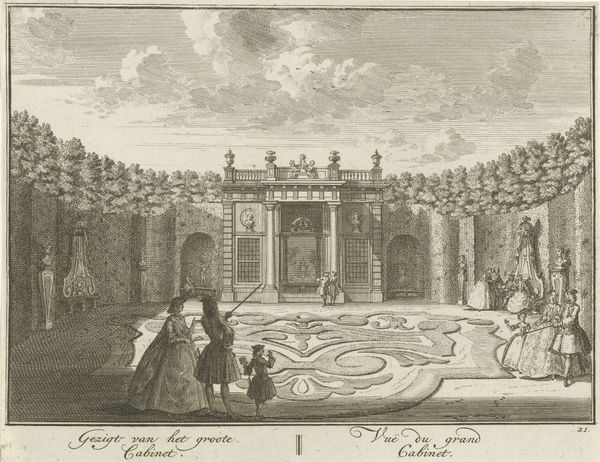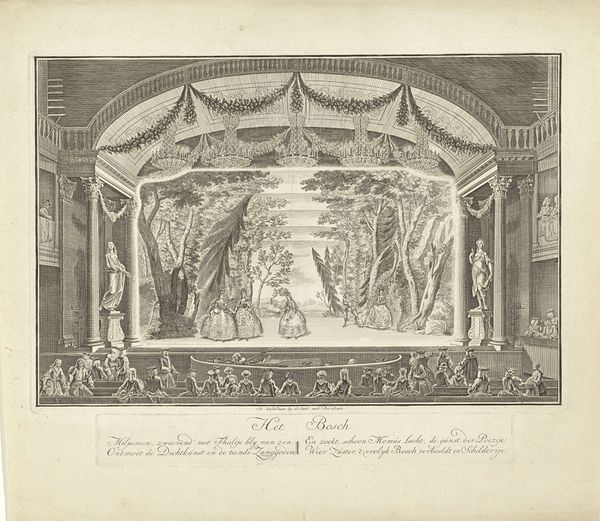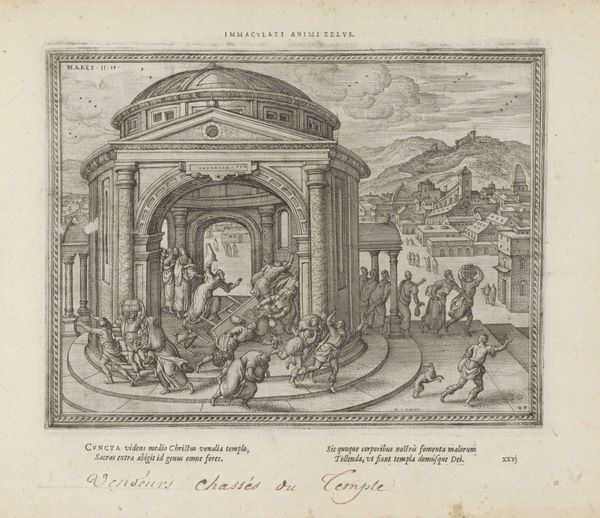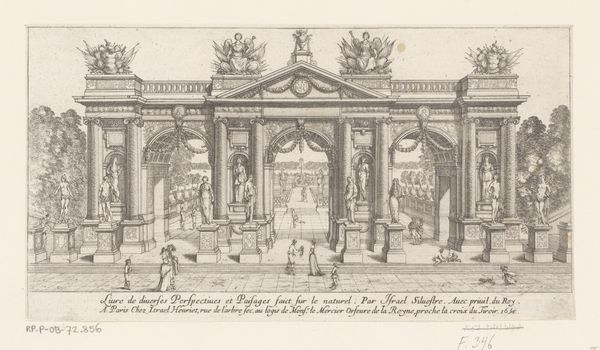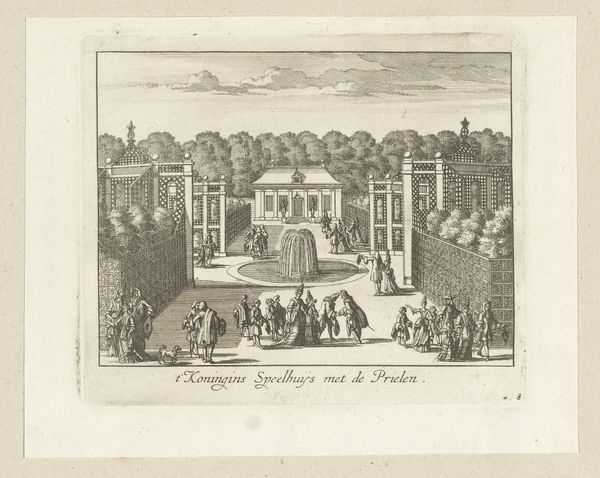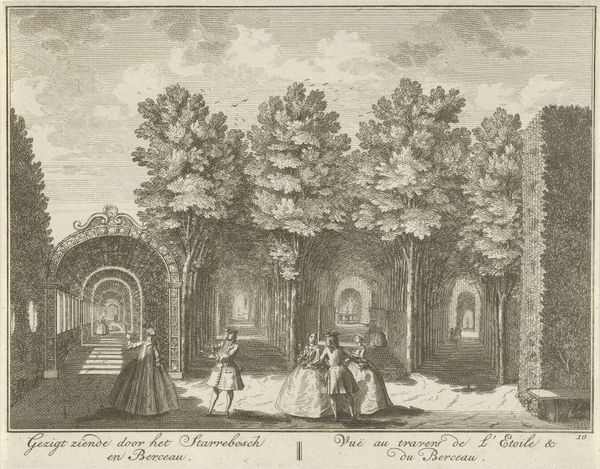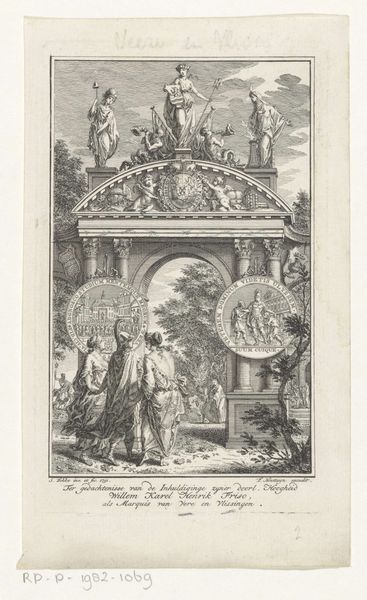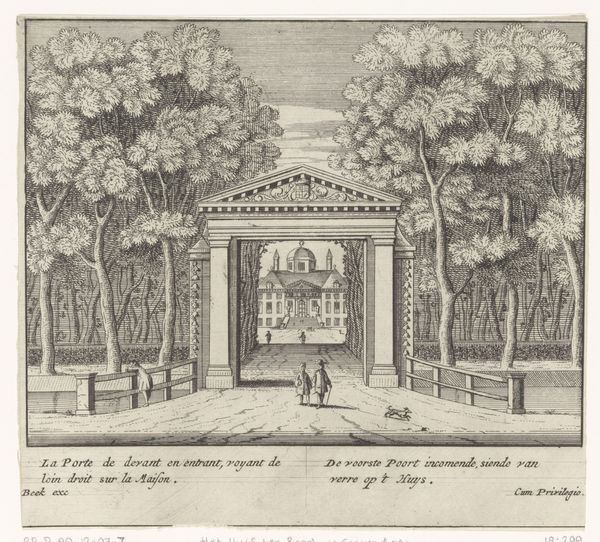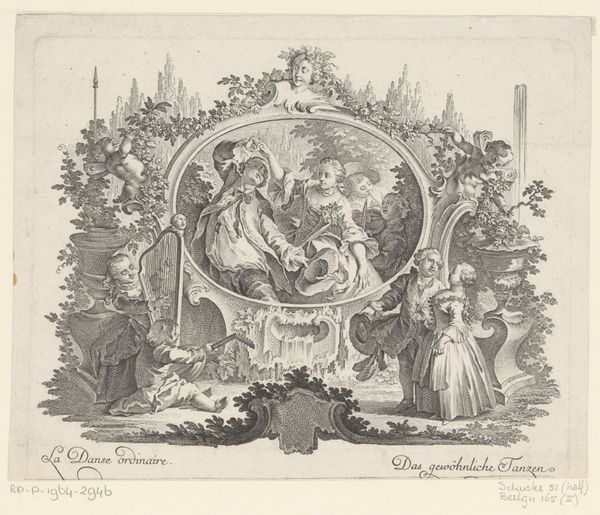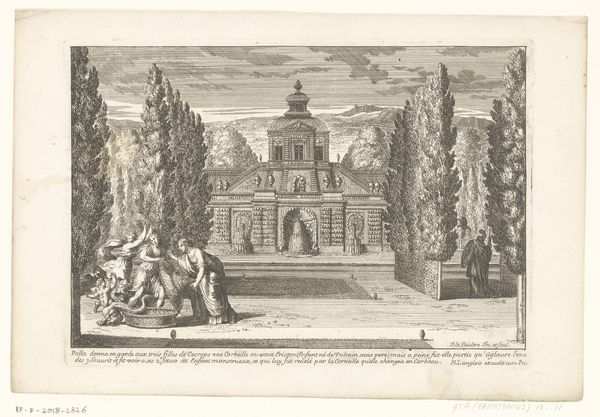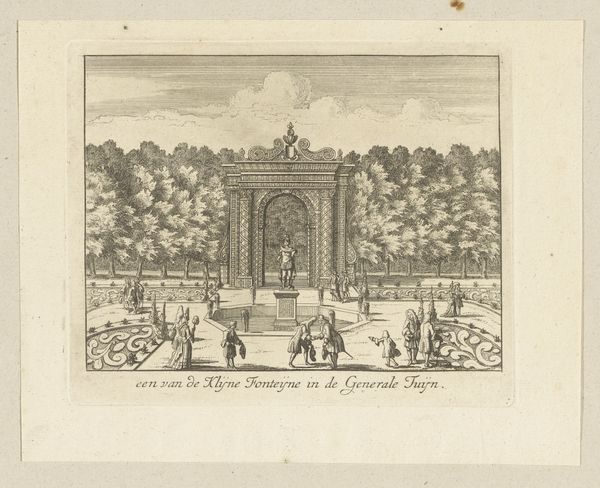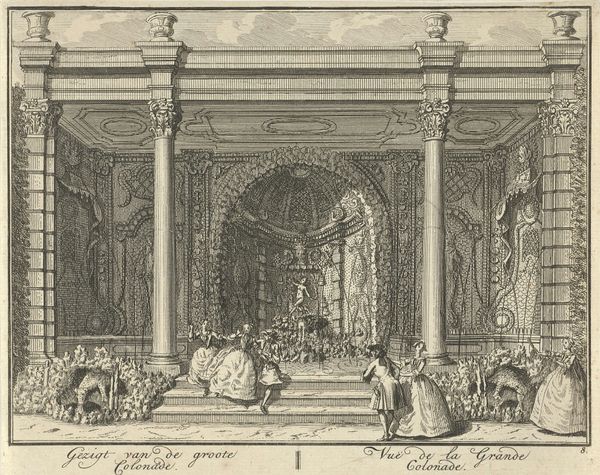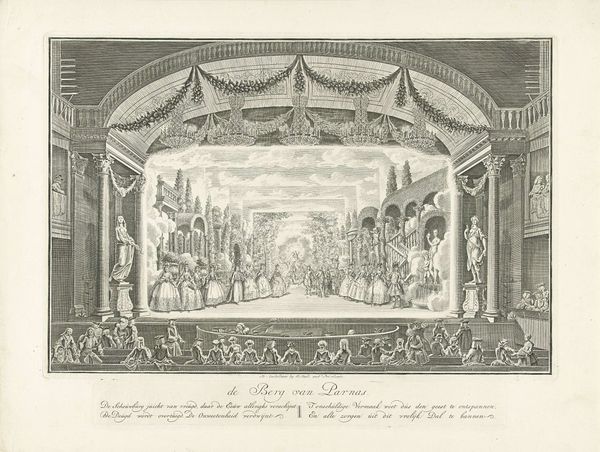
Watergrot van Neptunus in de tuin van Huis ter Meer te Maarssen c. 1740
0:00
0:00
hendrikdeleth
Rijksmuseum
print, fresco, engraving, architecture
#
baroque
# print
#
old engraving style
#
landscape
#
fresco
#
cityscape
#
engraving
#
architecture
Dimensions: height 157 mm, width 200 mm
Copyright: Rijks Museum: Open Domain
Editor: So, this engraving, "Watergrot van Neptunus in de tuin van Huis ter Meer te Maarssen," by Hendrik de Leth, dates back to about 1740. It's incredibly detailed; I'm struck by the sheer artifice of this grotto in the middle of a garden. What statements were landscapes like this trying to make? Curator: This image offers us a window into the Dutch elite’s understanding of power and status in the 18th century. Think about the symbolism of Neptune – the god of the sea – placed within a carefully constructed grotto. What does it mean to domesticate such a potent, uncontrollable force of nature? Editor: It's about control, right? Controlling nature, showcasing wealth, and… projecting a certain image? Curator: Exactly! It's about visually manifesting power. This wasn't merely about aesthetic pleasure; it was a declaration of dominance. Consider how the Baroque style, with its ornate details and dramatic flair, reinforces this idea. What identities and stories were privileged within these designed spaces, and whose labor made them possible? Editor: The social implications are pretty obvious, aren't they? This landscape, as beautiful as it is, stands on a deeply unequal social structure. Curator: Precisely. And we have to also acknowledge the role these images played in normalizing those hierarchies. They weren’t passive representations; they actively shaped perceptions and expectations. How might contemporary artists engage with this image to critique its underlying power dynamics? Editor: I see the engraving in a new light now! I came in thinking of it as just a landscape, but now I see the performance of power embedded in every line. Curator: Indeed! And by examining these historical representations, we can become more critically aware of how similar dynamics persist in contemporary culture.
Comments
No comments
Be the first to comment and join the conversation on the ultimate creative platform.
